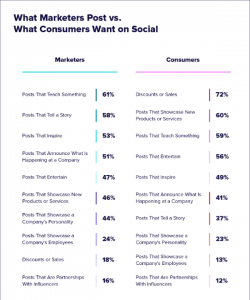Since COVID-19 hit, more merchants than ever are dispensing with brick-and-mortar locations—but the competition is tough. How can dropshipping businesses gain a competitive edge and retain customers?
According to data from IBM’s U.S. Retail Index, pandemic conditions accelerated the projected shift away from physical stores and toward online shopping by about five years. As a result, e-commerce flourished while department stores experienced unprecedented revenue declines. Even the most overlooked entrepreneurs—those without their own inventory—cashed in on the digital turn. As of 2021, the dropshipping market in the U.S. is estimated at $ 44.1 billion. In the last 18 months alone, popular e-commerce platform Alibaba has seen a 150% increase in business from U.S. firms.
The idea behind dropshipping is simple: set up an online store on Shopify, advertise on Instagram or other social networks, and let third parties take care of inventory and shipping. You’re probably thinking, “That sounds a little too easy”—but dropshipping is far from a get-rich-quick scheme. Convenience comes with downsides, including high competition, low profit margins, and lack of control over the supply chain. Identifying the right product and increasing customer retention are the main challenges for entrepreneurs in this highly competitive market.
Fortunately, there are tools and strategies available to help entrepreneurs navigate the world of dropshipping in these uncertain times.
- Invest in advertising and marketing. The market is oversaturated with businesses offering the same items, and a memorable brand goes a long way in helping you stand out from the crowd. If you’re doing dropshipping on a zero budget, the results could end up being less than you’d hoped for. As a rule, the more you invest, the more you get. If you don’t have your own budget, you can always try small business grants. For example, Alibaba just launched a grants program offering $ 500,000 to support newly established SMBs. Any Alibaba.com account holder with an “innovative product idea or go-to-market strategy” is eligible to apply. The 50 winners, each awarded $ 10,000, will be announced in December.
- Always be on the lookout for winning products and new suppliers. COVID-19 has delayed shipping from China, where most U.S.-based dropshipping businesses source their products. Container shortages and increased warehousing rates are also putting pressure on profit margins. Looking for alternative manufacturers, in Latin America, for example, could help diversify inventory from China. These days, product quality is more important than ever. Don’t underestimate the power of market research when making your choice. For example, according to Global Industry Analysts (GIA), the worldwide toys, hobby, and DIY segment will reach $ 87 billion by 2026.
- Embrace new technology to increase customer retention. The Bain & Company report claims that a 5% increase in customer retention boosts profits up to 95%. By engaging and retaining shoppers, you can widen your profit margins, lower ad costs, and improve performance on retargeting advertising. Launching your own app could be one step in this direction. According to New York-based mobile partnership platform Button, shoppers make twice as many purchases through apps than they do on mobile web stores. If the idea of creating your own app sounds intimidating, remember you don’t need to build it from scratch. For example, for less than $ 100 a month, a white label solution called KUKApp lets dropshipping businesses “cook up” their app and get approved by the app stores within 24 hours.
Dropshipping allows entrepreneurs to cut costs and enjoy their free time, a priority for many during COVID. Overall, the global dropshipping market is projected to reach $ 591.77 billion by 2027. Dropshipping isn’t dead; like so many other industries this year, it’s going through a transformation. If e-commerce entrepreneurs are prepared to learn, create, and explore new technology, they’ll survive and thrive in the pandemic and beyond.
Digital & Social Articles on Business 2 Community
(46)
Report Post






